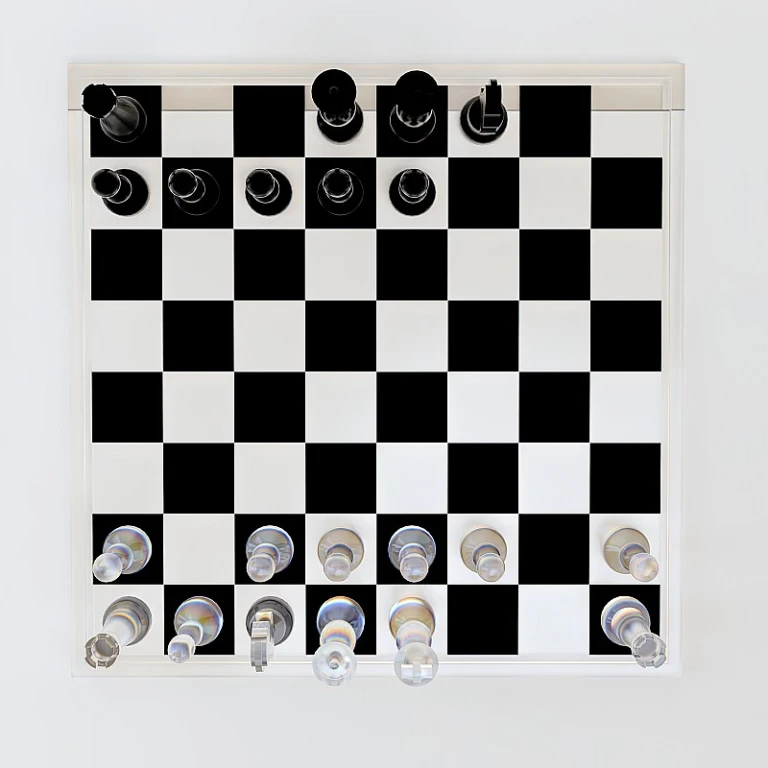
Understanding the Importance of Team Building in Employee Retention
Recognizing the Role of Team Building in Employee Commitment
Team building is often seen as an enjoyable diversion from the daily grind, but its value extends far beyond fun and games. These activities are pivotal for fostering a sense of connection, trust, and collaboration among team members, which are essential components for employee retention. In small groups, the impact of team building activities can be even more profound due to the necessary closeness and intensity of interaction.
The advantages of organizing team building exercises are manifold. By engaging team members in problem-solving tasks, communication skills are honed, and mutual understanding is deepened. These activities serve as a platform where team members feel motivated to communicate more openly and confidently, thereby enhancing overall team communication.
If we delve into the applicability of these exercises for smaller groups, it becomes evident that the intimate setting allows the participation of each team member, ensuring they feel valued and heard. This contributes greatly to job satisfaction and loyalty. Building activities like "escape room" challenges or "minute to win it" games can be adjusted according to group size and time limitations, so everyone feels involved and energized.
Retention studies show a direct link between team building efforts and reduced turnover rates. By investing time in creating team bonding opportunities, organizations demonstrate commitment to their workforce, which is reciprocated with increased employee dedication and retention.
Measuring the impact of these activities is crucial, as it allows managers to understand the strategies that work best for their team size and dynamics. Moreover, overcoming common challenges in executing small group activities requires an understanding of team dynamics, which enhances the effectiveness of each activity.
For more detailed insights on how the duration and nature of team building activities can influence team dynamics and retention, you can explore different aspects here. Developing an appreciation for the type and duration of these activities is an essential step toward establishing a cohesive work environment that retains top talent.
Tailoring Activities for Small Groups
Customizing Team Building for Small Group Dynamics
When it comes to maximizing employee retention, the dynamics of small groups deserve special attention. A one-size-fits-all approach to team building activities isn't effective, particularly in smaller teams where individual contributions are more apparent. Tailoring these activities to fit the unique characteristics and needs of your team can foster stronger connections and more significant outcomes. Opt for activities that encourage collaboration and communication among team members, all while keeping an eye on the specific group size. Activities such as escape room challenges or cooperative problem-solving games are particularly effective as they require each team member to engage and contribute their skills, which enhances team bonding. The key lies in selecting the appropriate building exercises that reflect not only the team size but also the skillsets and personalities of those involved. For smaller teams, games that emphasize collaboration over competition are often more beneficial. Engage the team in brainstorming sessions to choose the activities they are interested in, which will, in turn, spark their enthusiasm and commitment. When planning team building games, account for the available time as well. Ensure each activity has a clear time limit to maintain focus and momentum. Even simple, fun team games, when thoughtfully executed, can lead to improved communication skills, greater team bonding, and ultimately, better employee retention. Find balance in the activities chosen to keep the sessions lively and engaging without imposing unnecessary pressure on the team members. Lastly, consider the environment. Whether you play in the office, an outdoor setting, or partake in virtual activities, the right atmosphere can drive engagement and team spirit. The ultimate goal is to create experiences that leave team members feeling rejuvenated and closer to one another, setting a foundation for a motivated and cohesive team capable of achieving great things together.Creative and Fun Activities to Boost Morale
Fun and Innovative Ways to Boost Morale
In the realm of team building, introducing activities that are both creative and enjoyable can significantly enhance employee morale, especially in small groups. The key is to seamlessly foster teamwork, communication skills, and problem solving abilities while ensuring participants have a great time.- Office Escape Room: Transform your office into an escape room. This immersive activity encourages team members to work together, utilizing their communication skills and collective brainpower to solve puzzles within a designated time limit. This not only promotes team bonding but also sharpens decision-making abilities.
- Minute to Win It Games: These are quick and fun team challenges that require team members to complete simple tasks in under a minute. Such activities can be great for breaking the ice and bringing out the competitive spirit, offering team groups opportunities for laughter and camaraderie.
- Problem Solving Workshops: Conduct exercises that require teams to collaboratively solve hypothetical or real-world issues. This not only stirs creative thinking but also solidifies group dynamics and boosts team morale. These workshops are effective team building exercises that foster an office environment conducive to collaboration.
- Interactive Role-Playing Scenarios: Create scenarios where employees have to take on different roles in a simulated environment. These activities kids enjoy can be adapted for adults, encouraging empathy and enhancing communication and negotiation skills across varying group sizes.
Measuring the Impact of Team Building Activities
Assessing the Success of Team Building Exercises
Evaluating the effectiveness of team building activities is crucial for ensuring they are contributing positively to employee retention and overall workplace morale. Monitoring and analyzing the outcomes of these activities will help you make informed decisions about future initiatives.- Feedback from Team Members: One practical way to measure the impact is by collecting feedback from the team members involved. This may be done through surveys or informal discussions, allowing team members to express their thoughts on the different team building exercises. Pay attention to comments about fun, communication improvements, and the general vibe among the team after the activities.
- Performance Metrics: Comparing performance metrics before and after the activities can provide insights into the tangible benefits. Pay attention to areas such as problem-solving skills, communication skills, and overall productivity. Changes in these areas may indicate the success of the activities.
- Observation of Team Dynamics: Observing how team groups operate post-activity can reveal improved cooperation and communication. Notice whether members are more willing to collaborate and engage with one another during work, perhaps using skills developed during fun team games, like an escape room challenge or activities tailored for small groups.
- Retention Rates: Long-term effects can also be evaluated by analyzing employee retention rates before and after implementing regular team building activities. Consistent improvement in retention can be a strong indicator that the activities are having a positive impact.
Overcoming Common Challenges in Small Group Activities
Addressing Potential Hurdles in Small Group Engagement
Engaging small groups in team building activities can produce exceptional results in employee retention, yet it also comes with its own set of hurdles. Identifying and overcoming these common challenges is crucial for crafting an experience that truly enhances communication and teamwork among members. First, consider the diverse skill levels within a small group. It's important to ensure that all team members feel included and capable of contributing to the task at hand. To address this, select activities that cater to a variety of skill sets and encourage teamwork. For instance, games like problem solving challenges or escape rooms can be tailored to fit different abilities within the group. Another potential challenge is varying levels of interest and enthusiasm. Not every person will be equally engaged in certain activities. To counter this, integrating fun, creative forms of engagement that align with the interests of your team will be beneficial. Facilitating a range of activities, such as icebreaker games or short, interactive exercises, can spark enthusiasm and encourage participation across the board. Time constraints also pose a common hurdle. Every group has limited time for activities, especially during work hours. Set reasonable time limits for each exercise to maintain momentum and keep the energy high. Quick activities, such as a 10-minute team building exercise, can be an effective way to refresh the team's spirit without disrupting the flow of work. Finally, it's important to address any miscommunication that might arise during these activities. Clear, open communication is vital to the success of team building efforts. Encouraging members to express their thoughts and concerns freely will promote a positive environment and enhance the overall group dynamic. By proactively addressing these challenges, teams are better positioned to enjoy a successful, engaging team building experience that ultimately leads to stronger workplace relationships and improved retention rates.Best Practices for Sustaining Engagement Post-Activity
Maintaining Momentum After Activities
Following team building activities, it is crucial to keep the energy and engagement levels up. It's not enough to just hold successful team building events; continuous engagement is key to maintaining a cohesive team. Here are several strategies you can implement in your workplace:
- Regular Follow-Ups: Continue the momentum by scheduling regular check-ins with your team. This helps in reinforcing the skills and communication methods learned during the activities. Plus, it's a great opportunity to address any arising issues, ensuring that team bonding continues to strengthen.
- Create Team Rituals: Establish regular team rituals, such as weekly lunches or monthly games, to maintain team camaraderie. This offers team members a chance to connect consistently, fostering a sense of unity beyond their daily tasks.
- Encourage Open Communication: Foster a culture where team members feel comfortable sharing their thoughts and feedback. Open communication builds trust and ensures that any challenges can be addressed collaboratively, promoting a stronger team dynamic.
- Celebrate Achievements: Recognize and celebrate team achievements, no matter the size. This not only boosts morale but also reinforces the value of teamwork and the efforts of each team member.
- Gather Feedback: After every team building event, gather feedback to understand what worked well and what could be improved. This input is invaluable for tailoring future activities to better suit the team's needs and interests.
- Empower Team Leaders: Empower team leaders to act as champions of team culture. Encourage them to take initiative in organizing smaller, impromptu activities or exercises that keep the group's energy high and relationships thriving.
By implementing these strategies, organizations can ensure that the team building efforts resonate well beyond the initial events. This sustained engagement not only enhances team dynamics but also contributes to long-term employee retention, as team members are more likely to stay with a company that values and promotes their well-being and connectivity.











